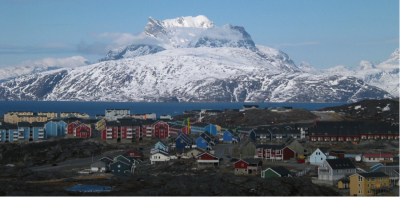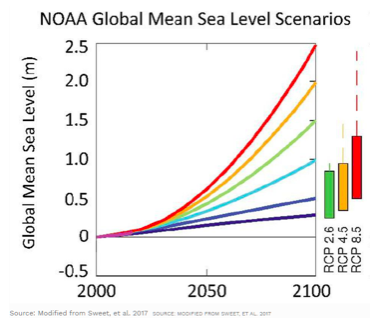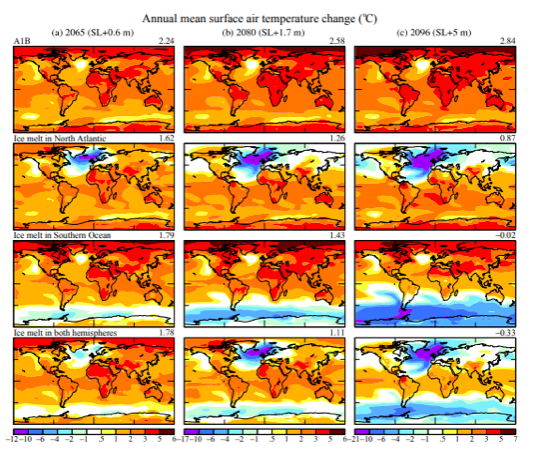High Sea Level Rise Projections and the IPCC

Global Research Editor’s Note
There is controversy concerning the IPCC analysis.
Global Research will be publishing both sides of this important debate on climate change: the IPCC focus as well as the critics including the analysis pertaining to environmental modification techniques for military use, which the IPCC fails to acknowledge.
***
In a key paper titled “Scientific reticence and sea level rise” (2007) James Hansen, the renown climate scientist, has been critical of what he regards as major underestimates of the magnitude and pace of global warming, as further elaborated in the article “How the IPCC Underestimated Climate Change: Here are just eight examples of where the IPCC missed predictions)” (Glen Scherer, 2012) and this.
It is only more recently that the IPCC has upgraded its climate projections, stating “Human activities are estimated to have caused approximately 1.0°C of global warming above pre-industrial levels, with a likely range of 0.8°C to 1.2°C. Global warming is likely to reach 1.5°C between 2030 and 2052 if it continues to increase at the current rate”, and “Warming greater than the global annual average is being experienced in many land regions and seasons, including two to three times higher in the Arctic. Warming is generally higher over land than over the ocean.”
Whereas IPCC reports are based on authoritative peer reviewed scientific journal publications, the summaries for policy makers tend to underestimate the scale and pace of the consequences of global warming, currently induced by a rise in greenhouse gas at rates unprecedented since about 56 million years ago (Cenozoic mean greenhouse gases and temperature changes with reference to the Anthropocene 2016).
A prime example is the question of sea level rise, estimated by the IPCC 2007 to reach 50 cm by 2100. At that stage the IPCC stated no reliable estimates existed for the breakdown of the Greenland and Antarctica ice sheets, despite reports of increased Greenland melt in 2005. This is contrasted to sea level rise of several meters projected by James Hansen, consistent with paleo-climate observations of a rise of sea level of 7-9 meters during the Eemian, 125 thousand years ago, when temperatures were similar to current temperatures. This implies lag effects of ice sheet melting and a major sea level rise, possibly this century. Recently the IPCC updated its estimates to a maximum of 1 meter by 2100 according to model RCP8.5 whereas according to NOAA sea level may reach a maximum of 2.5 meters by the end century relative to the year 2000, getting close to the level suggested by Hansen.
According to Hansen and a large group of climate scientists (2016), the flow of cold ice melt water from Greenland and the Antarctic ice sheets cause ocean surface cooling in the Southern Ocean and North Atlantic while lower latitudes are warming, driving more powerful storms.
These authors state:
“Continued high fossil fuel emissions this century are predicted to yield (1) cooling of the Southern Ocean, especially in the Western Hemisphere; (2) slowing of the Southern Ocean overturning circulation, warming of the ice shelves, and growing ice sheet mass loss; (3) slowdown and eventual shutdown of the Atlantic overturning circulation with cooling of the North Atlantic region; (4) increasingly powerful storms; and (5) nonlinearly growing sea level rise, reaching several meters over a timescale of 50–150 years. These predictions, especially the cooling in the Southern Ocean and North Atlantic with markedly reduced warming or even cooling in Europe, differ fundamentally from existing climate change assessments. We discuss observations and modeling studies needed to refute or clarify these assertions.
Figure 2. Model surface air temperatures (C) relative to 1880–1920 in (a) 2065, (b) 2080, and (c) 2096. Top row is IPCC scenario A1B, see this
The consequences of Eemian-like 7-9 meters sea level rises around the world would include flooding of large heavily populated and food producing delta plains, such as the Ganges delta (Bangladesh), Hindus delta (Pakistan), the Mekong delta (Vietnam), Yellow river delta (Northeastern China), Nile delta (Egypt), Po River delta (Italy) Rhine delta (northwestern Europe), Mississippi delta, Florida and elsewhere, with consequences for hundreds of millions of people and food supplies around the world.
There is no evidence much is being done by world governments and parliaments to avert such calamity.
*
Note to readers: please click the share buttons above. Forward this article to your email lists. Crosspost on your blog site, internet forums. etc.
Dr Andrew Glikson, Earth and Paleo-climate science, Australia National University (ANU) School of Anthropology and Archaeology, ANU Planetary Science Institute, ANU Climate Change Institute, Honorary Associate Professor, Geothermal Energy Centre of Excellence, University of Queensland. He is a frequent contributor to Global Research.
All images in this article are from the author.
The original source of this article is Global Research
Copyright © Dr. Andrew Glikson, Global Research, 2018






Geen opmerkingen:
Een reactie posten